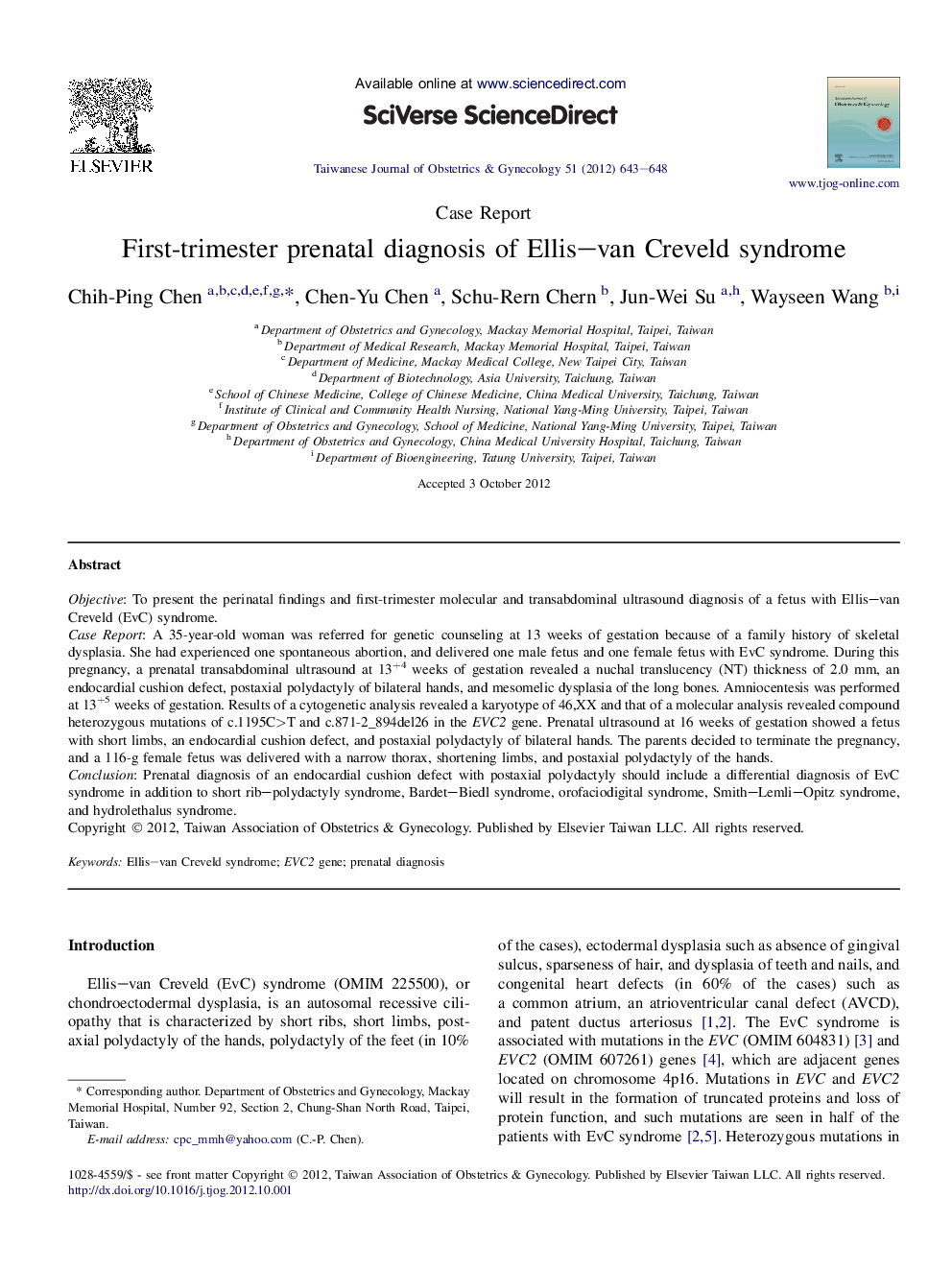| Article ID | Journal | Published Year | Pages | File Type |
|---|---|---|---|---|
| 3975658 | Taiwanese Journal of Obstetrics and Gynecology | 2012 | 6 Pages |
ObjectiveTo present the perinatal findings and first-trimester molecular and transabdominal ultrasound diagnosis of a fetus with Ellis–van Creveld (EvC) syndrome.Case ReportA 35-year-old woman was referred for genetic counseling at 13 weeks of gestation because of a family history of skeletal dysplasia. She had experienced one spontaneous abortion, and delivered one male fetus and one female fetus with EvC syndrome. During this pregnancy, a prenatal transabdominal ultrasound at 13+4 weeks of gestation revealed a nuchal translucency (NT) thickness of 2.0 mm, an endocardial cushion defect, postaxial polydactyly of bilateral hands, and mesomelic dysplasia of the long bones. Amniocentesis was performed at 13+5 weeks of gestation. Results of a cytogenetic analysis revealed a karyotype of 46,XX and that of a molecular analysis revealed compound heterozygous mutations of c.1195C>T and c.871-2_894del26 in the EVC2 gene. Prenatal ultrasound at 16 weeks of gestation showed a fetus with short limbs, an endocardial cushion defect, and postaxial polydactyly of bilateral hands. The parents decided to terminate the pregnancy, and a 116-g female fetus was delivered with a narrow thorax, shortening limbs, and postaxial polydactyly of the hands.ConclusionPrenatal diagnosis of an endocardial cushion defect with postaxial polydactyly should include a differential diagnosis of EvC syndrome in addition to short rib–polydactyly syndrome, Bardet–Biedl syndrome, orofaciodigital syndrome, Smith–Lemli–Opitz syndrome, and hydrolethalus syndrome.
